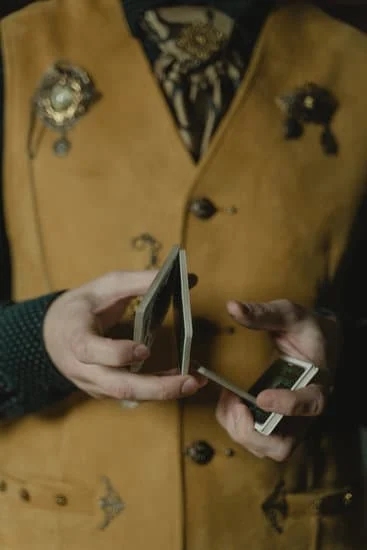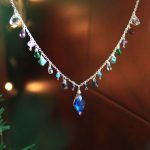Are the beads at the jewelry show real? Jewelry shows are a treasure trove for enthusiasts and professionals alike, offering an array of beautiful beads that captivate the eye. From stunning gemstones to intricately crafted glass and metal beads, these events showcase a world of craftsmanship and creativity. However, amidst the allure of these exquisite pieces, it’s essential to navigate the often murky waters of authenticity.
Whether you’re a seasoned collector or an amateur enthusiast, understanding how to differentiate between real and fake beads is paramount when perusing a jewelry show. The quest for genuine materials is not only about ensuring value for money but also about appreciating the artistry and labor that goes into creating authentic pieces. In this article, we delve into the world of jewelry shows and explore the significance of discerning whether the beads on display are real or not.
Join us as we unravel the mysteries surrounding jewelry shows and embark on a journey through the dazzling array of beads that adorn these exhibitions. From identifying genuine materials to understanding their ethical implications in the industry, we aim to equip you with essential knowledge to make informed decisions when confronted with the question: Are the beads at the jewelry show real?
The Different Types of Beads
Beads come in a wide variety of materials, each with its own unique characteristics and aesthetic appeal. When browsing through a jewelry show, it’s important to have an understanding of the different types of beads available. Real gemstones, such as diamonds, rubies, sapphires, and emeralds, are highly sought after for their natural beauty and value. These precious stones are often used as focal points in high-end jewelry pieces.
On the other hand, there are also synthetic alternatives to real gemstones that are commonly used in jewelry making. For example, cubic zirconia is a popular substitute for diamonds due to its brilliance and affordability. Additionally, glass beads offer a versatile and colorful option for creating intricate designs. Other synthetic materials like resin and plastic can mimic the appearance of gemstones at a fraction of the cost.
In addition to natural and synthetic options, there are also organic materials that are used to create beads. Pearls, derived from oysters and other mollusks, are coveted for their iridescence and luster. Coral beads offer a unique texture and visual appeal, while amber beads provide warmth with their rich golden tones.
Overall, having knowledge about the different types of beads is essential when navigating a jewelry show. Being able to distinguish between real gemstones, synthetic alternatives, and organic materials empowers consumers to make informed decisions about their purchases. Understanding the qualities of each type of bead allows individuals to appreciate the craftsmanship behind the jewelry pieces they encounter at these shows.
| Types of Beads | Description |
|---|---|
| Real Gemstones | Natural beauty & high value; e.g. diamonds, rubies |
| Synthetic Alternatives | Affordable substitutes; e.g. cubic zirconia |
| Organic Materials | Pearls from oysters; coral beads; amber beads |
How to Spot Real Beads
When attending a jewelry show, it can be overwhelming to navigate through the countless stalls and displays filled with beautiful beads. With so many options available, it’s important to be able to differentiate between real beads and their synthetic counterparts. Here are some tips and tricks for identifying genuine beads at a jewelry show, including visual and tactile cues.
Visual Cues
One of the easiest ways to spot real beads is by examining them visually. Genuine gemstones will have natural imperfections and variations in color, while synthetic or imitation beads may appear too perfect or uniform in their appearance. Look for any signs of irregularities or unique characteristics that are typical of natural gemstones.
Another visual cue is the presence of inclusion, which are natural materials trapped inside the gemstone as it forms. Inclusions can include minerals, fractures, or gas bubbles and can only be found in real gemstones. If you can see small imperfections within the bead when inspecting it under good lighting, chances are it is authentic.
Tactile Cues
In addition to using your eyes, you can also use your sense of touch to identify real beads at a jewelry show. Real gemstones will have a certain weight and temperature when handled, which is different from synthetic materials like plastic or glass. Run your fingers over the surface of the bead to feel for any texture or tiny irregularities that are common in natural stones.
Another way to test whether a bead is genuine is by conducting a simple scratch test. Rub the bead against a hard surface and see if there are any visible marks left behind. Real gemstones like diamonds and sapphires are incredibly durable and will not easily scratch, whereas synthetic materials may leave noticeable abrasions.
By paying attention to these visual and tactile cues, you can increase your chances of spotting real beads at a jewelry show and making informed purchasing decisions. Understanding how to distinguish between authentic gemstones and imitation materials will ultimately help you build a collection of high-quality jewelry pieces that truly stand the test of time.
Common Fakes to Watch Out For
When attending a jewelry show, it’s important to be aware of the common fakes and imitations that are often passed off as real beads. With the allure of beautiful gemstones and unique materials, it can be easy to be deceived by counterfeit beads. Here are some common fakes to watch out for:
- Colored Glass Beads: These beads are often made to resemble real gemstones such as amethyst, turquoise, or jade. They may have a similar appearance but lack the weight and hardness of genuine gemstones.
- Plastic Imitations: Plastic beads can mimic the look of real pearls, coral, or even precious metals like gold or silver. They may have a glossy finish that imitates luster, but they lack the natural properties and weight of authentic materials.
- Faux Gemstones: Synthetic versions of popular gemstones like diamonds, rubies, and sapphires are commonly found at jewelry shows. While they may look similar to the real thing, they do not have the same physical characteristics or value.
It’s essential to pay attention to visual cues such as luster, color consistency, and surface imperfections when inspecting beads at a jewelry show. Additionally, conducting a simple scratch test or observing how the beads react under UV light can also help in identifying counterfeit materials.
It is crucial for consumers to stay informed about these common fake beads in order to make educated purchases during a jewelry show By being aware of these imitations, buyers can ensure that they are getting authentic and high-quality materials in their jewelry pieces.
The Importance of Authenticity
When attending a jewelry show, it’s essential to know whether the beads are real or not. The authenticity of the beads greatly impacts the overall value and quality of the jewelry being showcased. Genuine beads made from materials such as precious gemstones, natural pearls, and high-quality metals significantly increase the worth of the jewelry piece.
On the other hand, fake or synthetic beads diminish its value and may affect its overall quality. Therefore, being able to discern between real and counterfeit beads is crucial for both buyers and sellers in the jewelry industry.
In addition to affecting the value and quality of jewelry, knowing whether the beads at a jewelry show are real also plays a pivotal role in understanding their durability and longevity. Real gemstones and natural materials tend to be more resilient and long-lasting compared to their synthetic counterparts.
Understanding this distinction is vital for consumers who want to invest in high-quality jewelry that will stand the test of time. It also provides valuable insight for designers and artisans who prioritize using authentic materials in their craft.
Moreover, recognizing real beads at a jewelry show is crucial for maintaining trust and credibility within the industry. Ethical considerations play a significant role in ensuring that customers are getting what they pay for when purchasing jewelry. By being transparent about the authenticity of beads, sellers can establish themselves as reputable and trustworthy businesses that prioritize honesty and integrity above all else.
| Importance | Affects |
|---|---|
| Value | Quality |
| Durability | Credibility |
Expert Interviews
When attending a jewelry show, it can be challenging to determine whether the beads on display are real or fake. This is especially true for individuals who may not have much experience in identifying different types of gemstones and materials used in jewelry making. To shed some light on this topic, we spoke with industry professionals and experienced jewelry makers to gather insight and guidance on distinguishing between real and fake beads at a jewelry show.
During our interviews, several experts emphasized the importance of knowing the different types of materials used in bead making. They pointed out that while some beads are made from real gemstones such as diamonds, rubies, and emeralds, others are crafted from synthetic materials or imitations designed to mimic the appearance of genuine gemstones. To help consumers make informed decisions at a jewelry show, they provided valuable tips and advice for spotting real beads.
Here are some key insights from our expert interviews:
- Look for natural imperfections: Real gemstones often have natural imperfections such as inclusions or variations in color. Synthetic or counterfeit beads are more likely to appear flawless and uniform.
- Conduct a visual inspection: Pay attention to the color, texture, and luster of the beads. Real gemstones tend to have unique characteristics that set them apart from imitations.
- Seek professional appraisals: If in doubt about the authenticity of a bead, consider seeking an appraisal from a certified gemologist or jeweler who can provide expert validation.
These insights from industry professionals and experienced jewelry makers serve as valuable tools for consumers navigating the world of jewelry shows. By arming themselves with knowledge about real vs fake beads, individuals can make confident purchasing decisions while ensuring they are investing in authentic and high-quality pieces for their collections.
Ethical Considerations
When it comes to buying and selling beads at jewelry shows, there are ethical considerations that need to be taken into account. The jewelry industry is not immune to the presence of counterfeit and imitation beads, and the impact of this goes beyond just the financial aspect. Both artisans and consumers can be affected by the prevalence of fake beads in the market.
Impact on Artisans
The presence of fake beads in the market can have a detrimental effect on artisans who create and sell their own jewelry. Authenticity is often a key selling point for these artisans, and when counterfeit beads are passed off as real, it undermines their work and reputation. Additionally, if consumers believe that they are purchasing genuine jewelry made with real beads, only to later realize that they are counterfeit, it can damage the trust between artisans and their customers.
Impact on Consumers
For consumers, the issue of fake beads goes beyond just being swindled out of their money. There are also potential health concerns associated with wearing jewelry made with counterfeit materials. Some imitation beads may contain harmful substances or allergens that can cause skin irritation or other adverse reactions. Furthermore, consumers may feel deceived and disappointed when they discover that their “real” bead jewelry is actually fake.
The Ethical Implications
The presence of counterfeit beads in the jewelry industry raises important ethical questions about honesty, transparency, and fairness. It highlights the importance of integrity in business practices and the responsibility of sellers to accurately represent their products.
Furthermore, it emphasizes the need for consumers to be aware and informed about how to differentiate between real and fake beads when making a purchase at a jewelry show. Ultimately, ethical considerations play a crucial role in maintaining trust within the jewelry industry and ensuring satisfaction for both artisans and consumers.
Conclusion
In conclusion, the world of jewelry shows is a dazzling and captivating place, with beautiful beads adorning countless pieces on display. The allure of these beads is undeniable, but it’s important for buyers to be aware of what they are purchasing. When it comes to identifying whether the beads at a jewelry show are real, there are crucial tips and tricks that can help consumers make informed decisions.
Throughout this article, we’ve explored the different types of beads used in jewelry making, as well as the importance of being able to spot real beads from fakes. It’s clear that the authenticity of beads greatly impacts the value and quality of the jewelry they adorn. With this knowledge in hand, buyers can confidently navigate their way through a jewelry show and make purchases that align with their preferences and values.
Ultimately, knowing whether the beads at a jewelry show are real or not puts power back into the hands of consumers. By being informed and knowledgeable about how to spot genuine beads from counterfeit ones, buyers can make ethical purchases that support artisans and uphold industry standards.
This understanding contributes to a more transparent and fair marketplace for both buyers and sellers alike. As such, it’s crucial for anyone attending a jewelry show to take the time to educate themselves on how to distinguish authentic beads from imitations.
Frequently Asked Questions
How Can You Tell if Beads Are Real?
You can tell if beads are real by examining their material, weight, and texture. Real beads are often heavier, have a natural feel, and may show imperfections or unique markings.
Are Bead Landing Stones Real?
Bead Landing stones are not real gemstones. They are simulated or synthetic stones created to imitate the look of real gemstones. These stones are commonly used in jewelry making as affordable alternatives.
Are the Crystals From Michaels Real?
The crystals from Michaels are typically not real natural crystals. They are often decorative glass or resin crystals that mimic the appearance of real crystals. While they may sparkle and shine, they do not possess the metaphysical properties of genuine crystals.

Welcome to my jewelry blog! My name is Sarah and I am the owner of this blog.
I love making jewelry and sharing my creations with others.
So whether you’re someone who loves wearing jewelry yourself or simply enjoys learning about it, be sure to check out my blog for insightful posts on everything related to this exciting topic!





